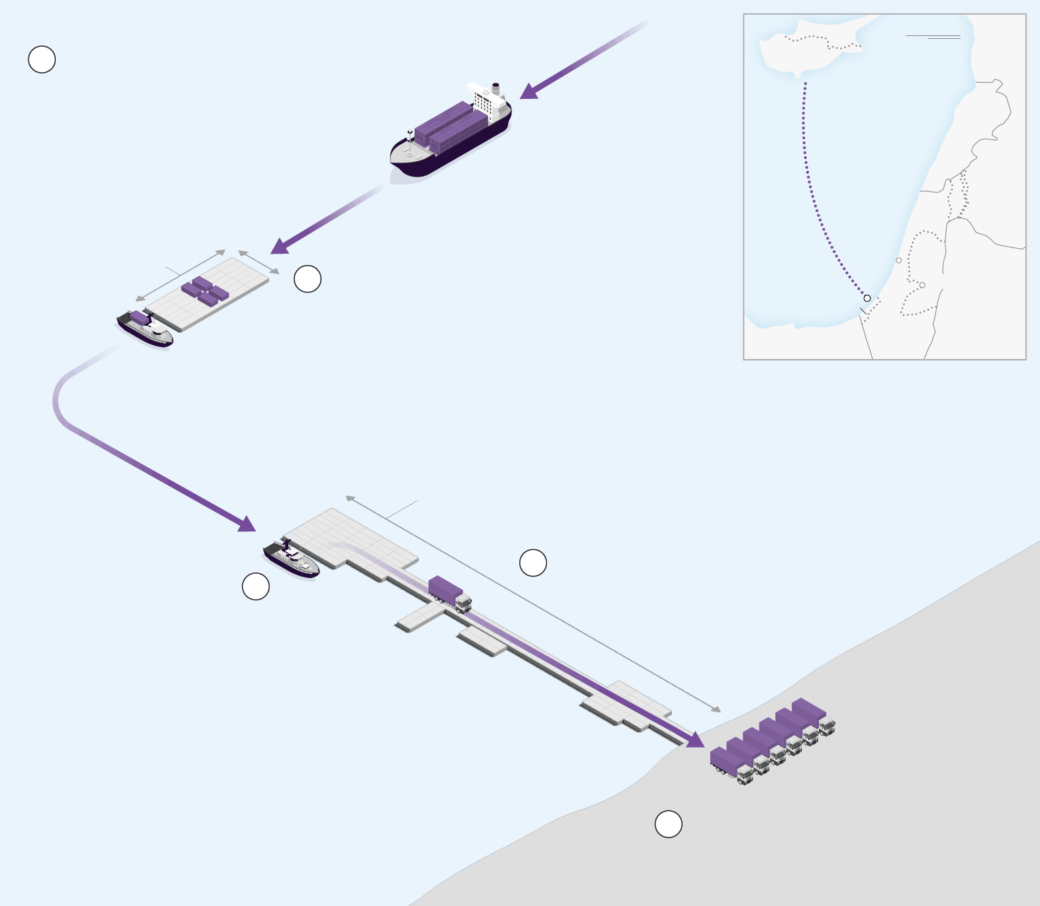
After a US-built aid pier broke apart in heavy seas Tuesday, the trickle of humanitarian aid entering Gaza has slowed even further.
Here’s the status of the three main crossings from Israel and Egypt into Gaza:
Rafah: Since Israel began its assault on Rafah on May 6 and seized control of the Gazan side of the crossing, aid has been blocked, with supplies piling up in Egypt. Israel and Egypt have blamed each other for the blockage.
Rafah had previously been the central artery for aid to flow into Gaza – and, last year, for some injured Palestinians and foreign nationals to enter Egypt.
Kerem Shalom: With Rafah closed, the Kerem Shalom crossing into southern Gaza was opened last week. Egyptian President Abdel Fattah El-Sisi and US President Joe Biden agreed to send aid to the UN via Kerem Shalom temporarily.
“This will help save lives,” Biden said, while efforts continue to reopen the Rafah crossing.
More than 370 aid trucks arrived at the crossing from Egypt on Monday, Israeli officials said.
But UNRWA, the main UN relief agency in Gaza, said it had picked up only 30 trucks for distribution on the Gazan side of the crossing. Another UN agency said while the crossing is open “in principle,” fighting makes it hard to access aid from the Gaza side.
Some Israelis have staged recent protests at the crossing, demanding that no aid enter Gaza until Hamas releases all of the hostages.
Erez: Aid has trickled in through this crossing in the north of the enclave. From May 1 to May 20, the World Food Programme transferred 500 trucks, carrying 7,000 metric tons of aid, through the crossing.
But only the western side of the crossing is open, with Erez East still closed.
And the US pier? The temporary pier – built by the US military at a cost of $320 million – broke apart Tuesday, a little more than 10 days after it began operating. It will be removed from the Gaza coast and taken to the Israeli port of Ashdod for repairs, which will take more than a week, further delaying aid deliveries.
How Gaza aid will go through the floating pier
The pier is initially expected to help deliver about 90 truckloads of essential aid into Gaza daily. This could go up to around 150 truckloads, or roughly 2 million meals per day once the system is fully operational.

Source: US Department of Defense
Graphic: Lou Robinson and Rachel Wilson, CNN



